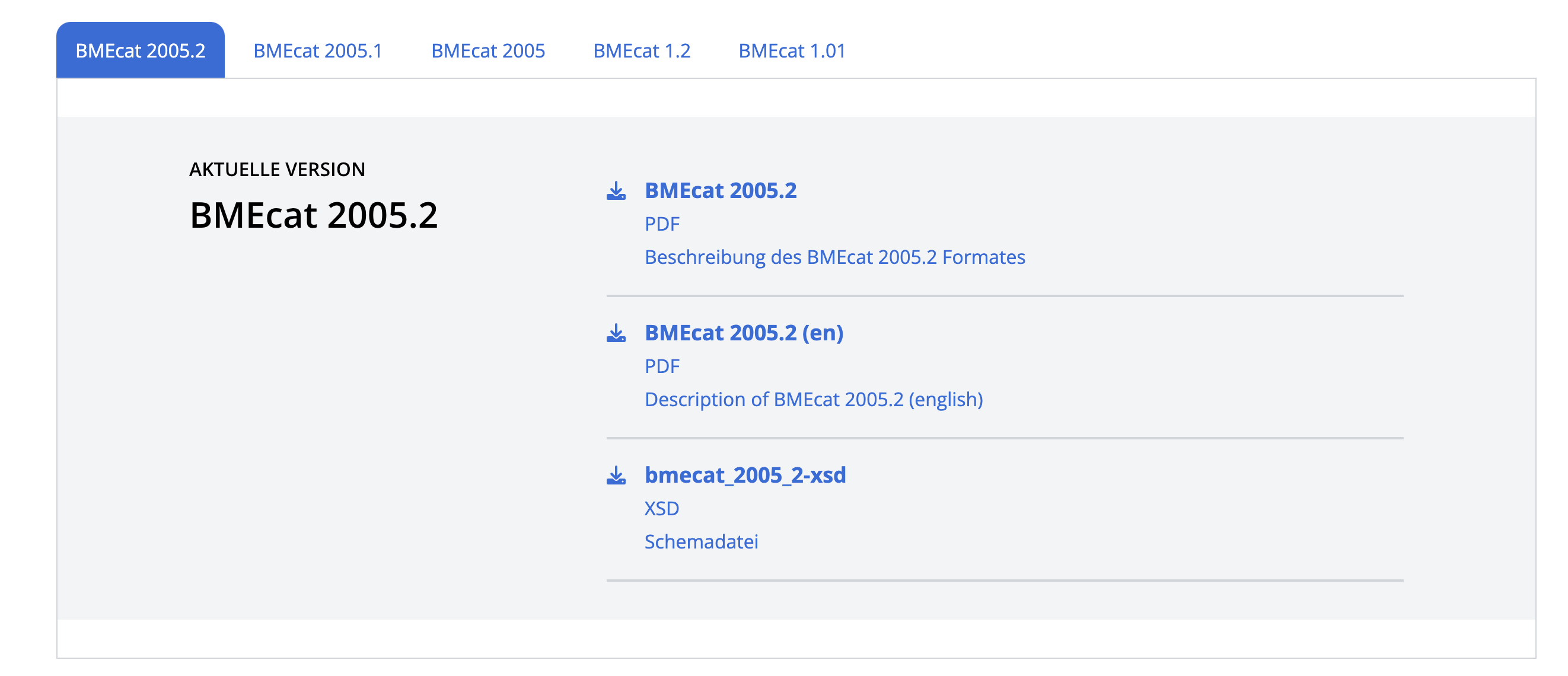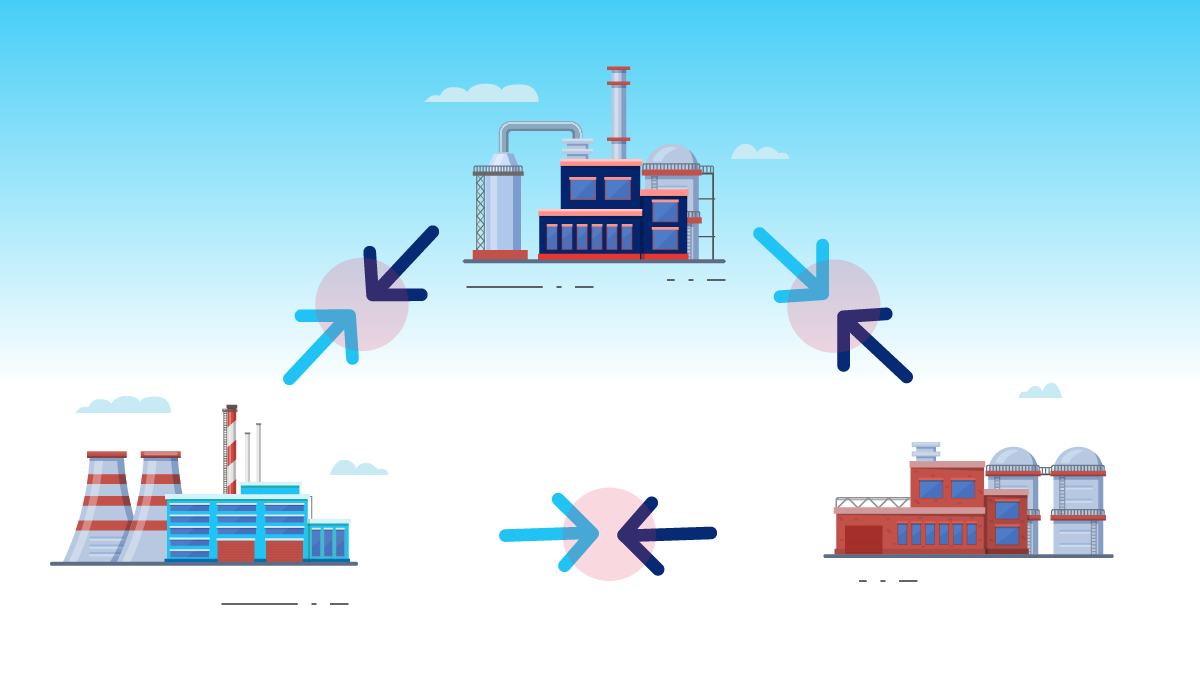Effective data exchange is a vital aspect of B2B operations. When it comes to exchanging product content across catalog systems, languages, and regions, BMEcat emerges as one of the most relevant international standards. This comprehensive standard has evolved over time, with recent versions introducing groundbreaking advancements to streamline the transfer of information.
Join us as we delve into the world of BMEcat and explore its various versions, discovering how it enables efficient and seamless product content exchange for businesses across industries.
What is BMEcat?
BMEcat is a standardized catalog exchange format for product information. Recognized throughout Europe and particularly popular in the DACH region, empowers manufacturers to create tailored files for smooth product data transmission to distributors and partners. The versatility of BMEcat allows for multiple variants, ensuring flexibility in meeting diverse requirements.
To simplify operations, many "groups" and national organizations have embraced BMEcat as the preferred file format for receiving manufacturer catalogs. By aligning with BMEcat, businesses can enhance compatibility and streamline their data exchange processes, fostering productive partnerships along the way.
BMEcat, also known as the "BMEcat Electronic Catalog", is a standard format for exchanging product data between organizations. BMEcat is based on XML, a widely used markup language for exchanging data between different systems. The BMEcat format is maintained by the German Industry Association for Information Technology, Telecommunications, and New Media (BITKOM), and it has been adopted by many leading B2B manufacturers and other companies around the world.
Looking to improve the way you manage and organize your product content? Consider using BMEcat with Productsup.
With its flexible XML data structure and support for multiple languages, product variants, and product images, BMEcat is the ideal solution for a standard format to exchange product data between B2B manufacturers and distributors.Schedule a call with our team.
Exploring the versions of BMEcat
The BMEcat standard was introduced in 2000 and has since undergone several updates to keep up with the evolving needs of the B2B commercial industries. BMEcat has evolved through several versions since its inception. Here is a brief overview of the versions of BMEcat:
 Source: Downloads BMEcat
Source: Downloads BMEcat
1. BMEcat 1.0: This was the initial version of BMEcat, approved in November 1999 in Frankfurt. The technical development for this version was conducted by the Fraunhofer Institute for Industrial Engineering and Organization IAO in Stuttgart, along with the Universities of Duisburg-Essen BLI and Linz. It aimed to streamline the catalog management process and enable seamless communication of product data.
2. BMEcat 1.01: BMEcat 1.01 is one of the earlier versions of the BMEcat standard. It was released as an update to the initial version, BMEcat 1.0. It focuses on the elimination of individual inconsistencies and revision of the example. The BMEcat V 1.01 specification document provides detailed information on how to create and use BMEcat-compliant product catalogs.
3. BMEcat 1.2 final draft: BMEcat 1.2 underwent a final draft stage in 2001, which focused on error corrections, minor additions, and overall improvement of the documentation. These further refinements aimed to enhance the accuracy, completeness, and usability of BMEcat 1.2, ensuring a more robust and reliable standard for the electronic data exchange of product catalogs.
4. BMEcat 1.2: The official BMEcat 1.2 was introduced at CeBIT 2001, establishing it as the standard for exchanging electronic product catalogs. It focused on eliminating errors and introducing significant changes without disrupting backward compatibility. BMEcat 1.2 maintains backward compatibility with BMEcat 1.01. This implies that product catalogs created in compliance with BMEcat 1.01 will also conform to BMEcat 1.2. Consequently, target systems that support BMEcat 1.2 can process existing BMEcat 1.01 product catalogs without issues. The official BMEcat 1.2 document provides detailed guidance on creating and utilizing BMEcat-compliant catalogs.
5. BMEcat 2005 final draft: This version involved the revision and extension of functionality, as well as the refinement of the specification's form and content. These updates aimed to enhance the standard, providing improved capabilities and ensuring that the specification accurately represented the requirements of BMEcat in its final form.
6. BMEcat 2005: The feedback received on the final draft of BMEcat 2005 was translated and taken into consideration. This feedback played a crucial role in further refining and improving the standard.
7. BMEcat 2005.1: BMEcat 2005.1 introduced an extension to the data model specifically targeting classification systems. This update focused on enhancing the standard's capability to accommodate various classification systems effectively.
8. BMEcat 2005.2: The current version of BMEcat is "2005.2." This version builds upon the previous iterations and introduces further enhancements. BMEcat 2005.2 expands the scope of electronic product information exchange, opening up other sectors and product groups for seamless data transmission. In BMEcat 2005, several additional functions have been incorporated, alongside numerous detailed improvements to the data models and a revised specification format. These extensions aim to enhance support for catalog-based sales and procurement processes, ultimately contributing to the optimization of catalog data exchange.
For a comprehensive version history of BMEcat, including details of each release, you can refer to the official document (page 15). Additionally, check out our help center page for information on setting up BMEcat 2005 and BMEcat 1.2 exports.
BMEcat stands as a prominent international standard for seamless product content exchange across catalog systems, languages, and regions.
With the latest versions of BMEcat, the specification of multiple languages can be encoded and shared through a single XML file, significantly enhancing the efficiency of information transfer across diverse regions and languages.
BMEcat finds extensive adoption among B2B manufacturers across various technical industries, serving as a reliable catalog format. Notably, 2ba and InstallData are just a few examples of organizations that rely on BMEcat. Additionally, numerous national organizations leverage formats closely resembling BMEcat for their catalog needs.
Are you a B2B manufacturer? Are you looking for an ideal product catalog format for your distributors and supply chain?
Supercharge your product data pool with Distribution PX.Learn more!


